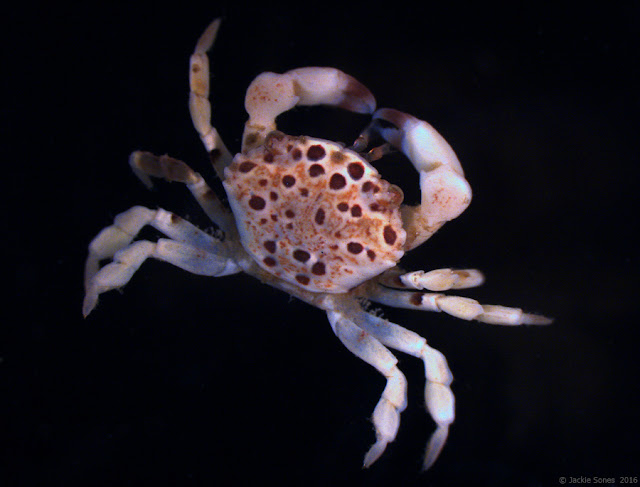There were thin white rings surrounding each dark spot and smaller orange speckles scattered across the carapace:
Eventually I noticed the dark tips on the claws — an important clue to the identification of this crab!
Seeing the dark claws made us realize this was probably a juvenile black-clawed crab (Lophopanopeus sp.).
And then we learned about another important feature to look for when identifying this group of crabs: hairs on the different segments of the walking legs:
Unfortunately, I don't have experience evaluating this character, and I might need better pictures, so we'll have to request help from crab experts to see if we can figure out which species of black-clawed crab this is.
P.S. The scientific name was intriguing to me. I tried to interpret the meaning behind it. "Lopho" means tufted or crested, and "panopeus" could refer to a character in Greek mythology known to be a fighter. This is guesswork, but perhaps "Lopho" refers to the hairs mentioned above, and perhaps "panopeus" refers to the strength and behavior of these crabs? For crabs of the same weight, the crushing force of the claw of a black-clawed crab is known to be more than 5x greater than a shore crab (Hemigrapsus nudus) and 2x greater than a rock crab (Cancer productus)! Watch your fingers!




2 comments:
These are beautiful little critters. Thanks Jackie.
Carol
Hi, Carol! I agree! What striking spots! Before we came up with a scientific name, we started calling it a little "leopard crab." :)
Post a Comment